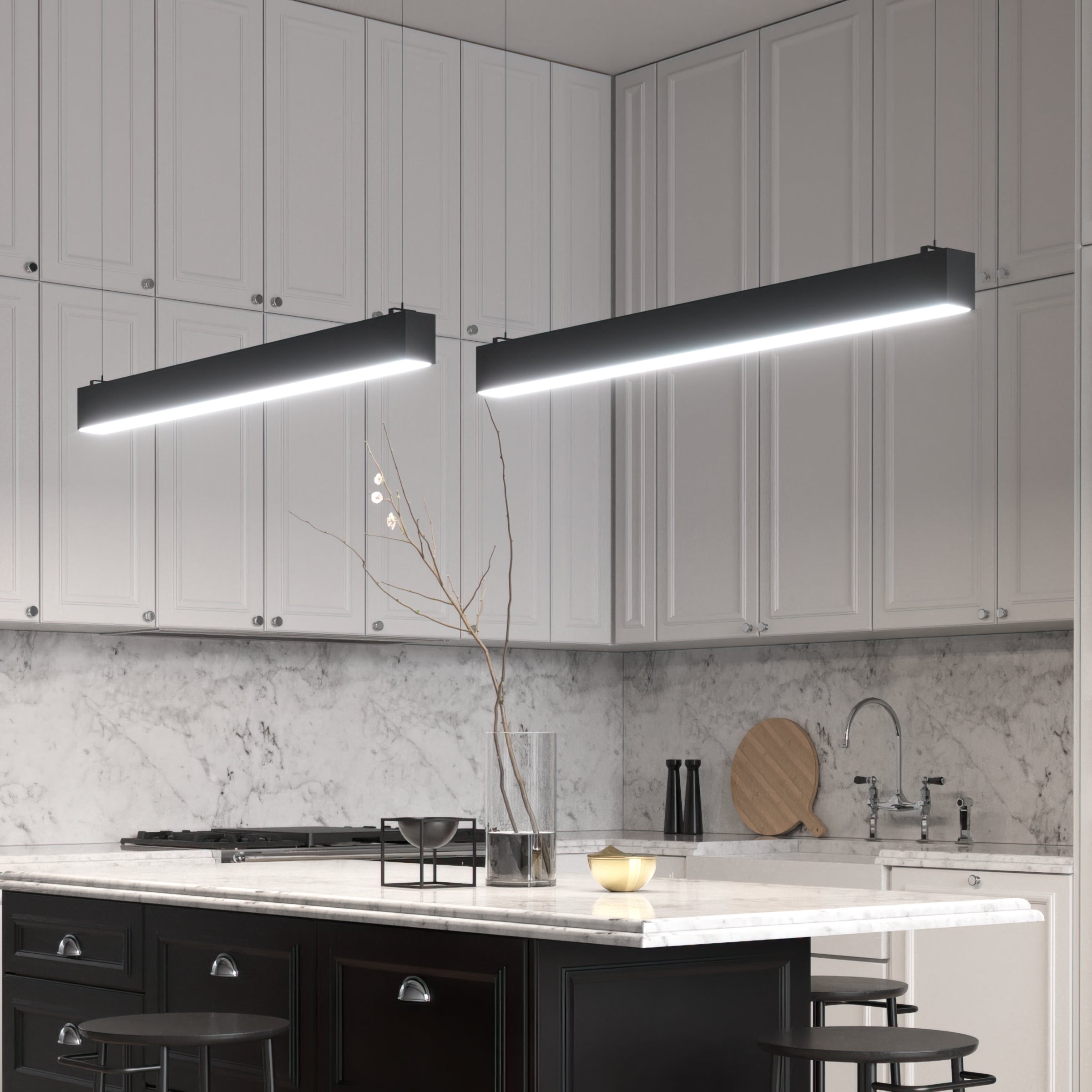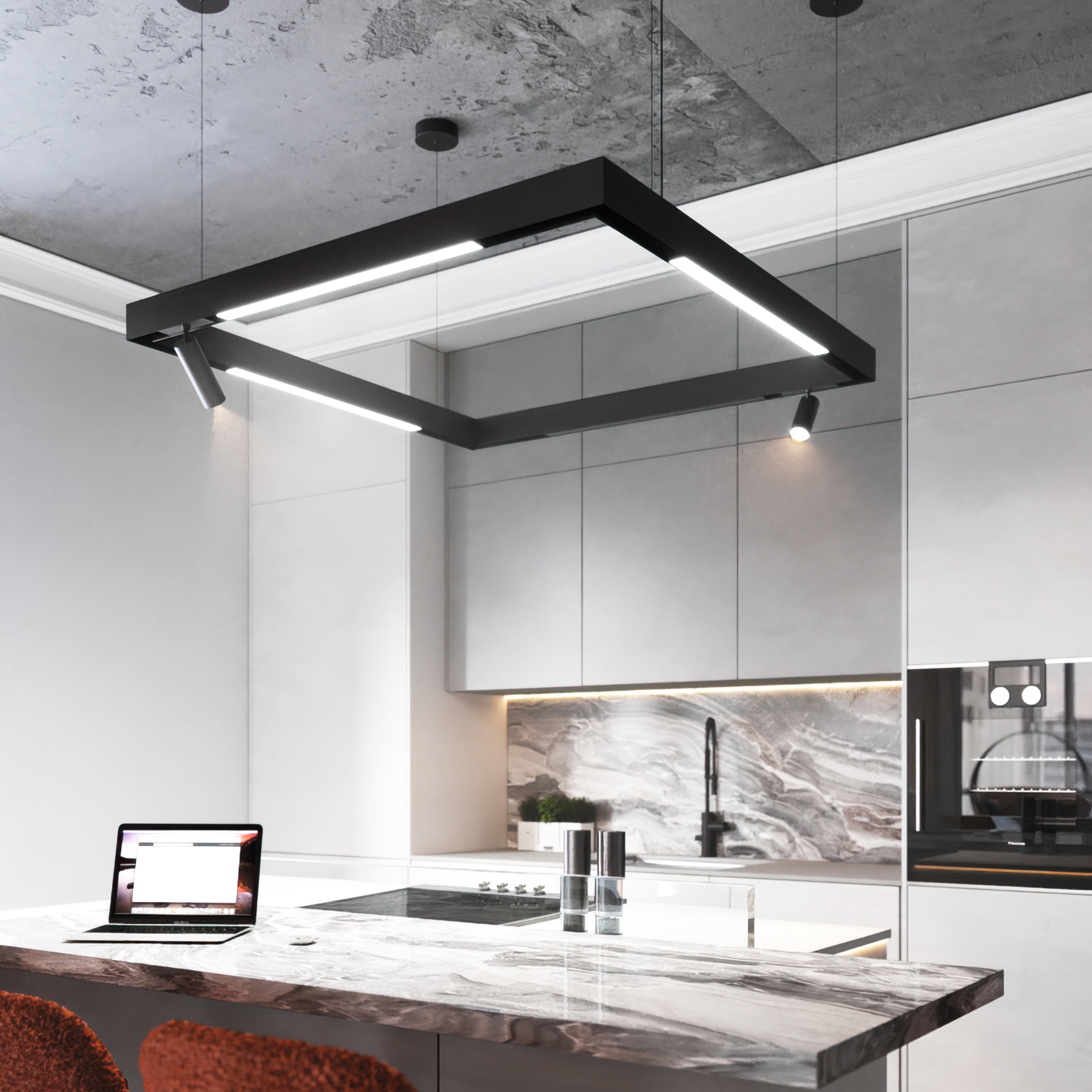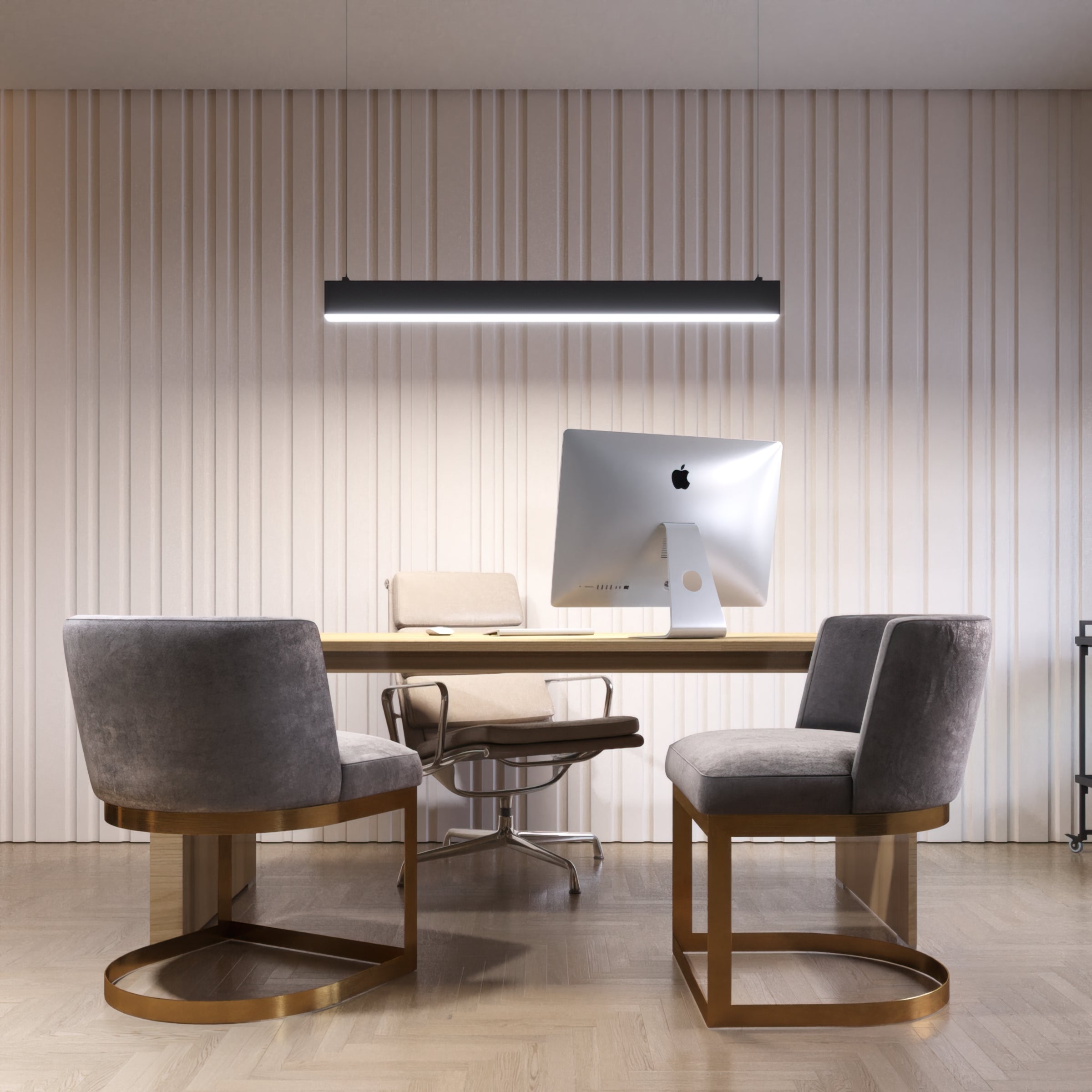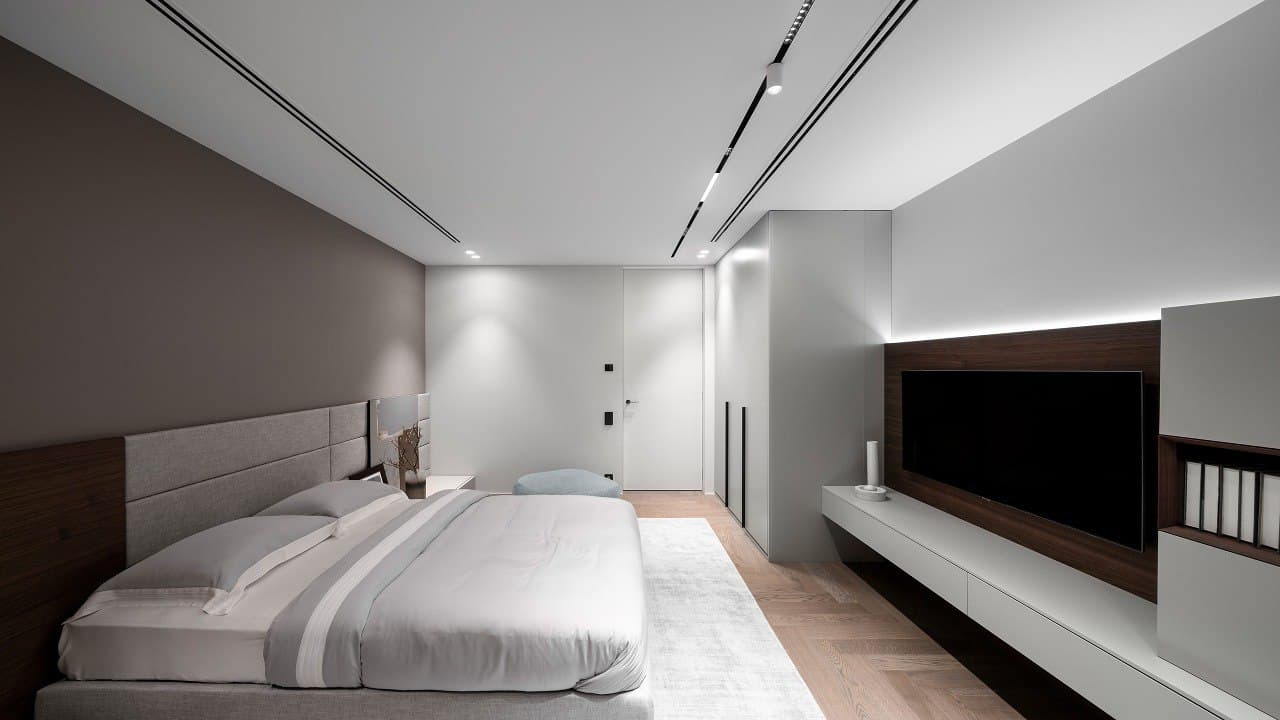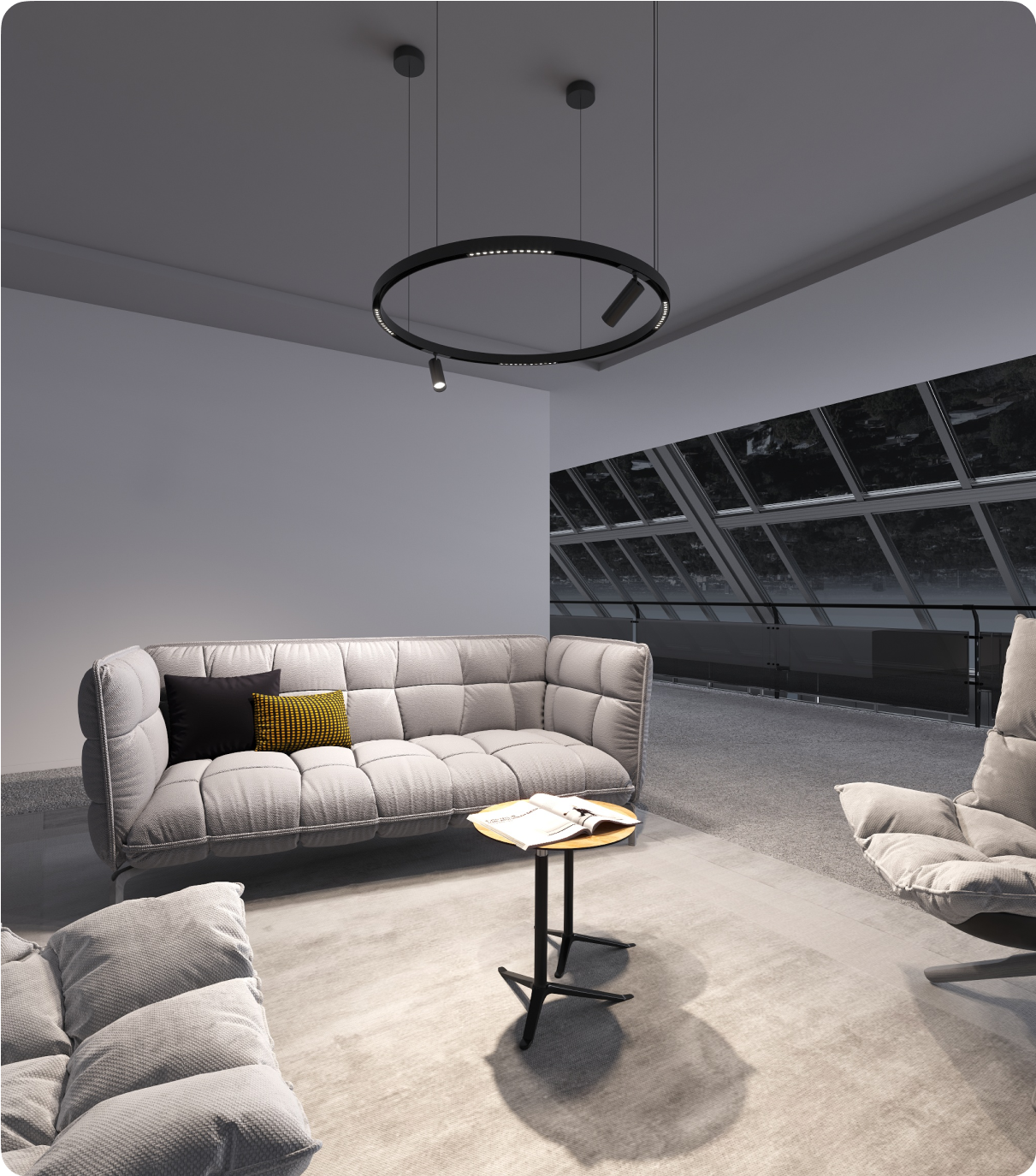Light Effects on Human Psychology and Physiology
Over the years, lighting has been researched in relation to its ability to impact humans, and scientific evidence indicates that good lighting can help employees become more productive and happier.
In a business environment, good LED lighting interior design is significant to create the perfect environment for employees and customers. The right architectural lighting can positively affect human psychology and physiology, promoting feelings of well-being, comfort, and productivity. However, poorly designed lighting can cause eyestrain, pains, and anxiety.

Lighting Design Factors
When designing interior lighting for any commercial space or some, there are a few factors that must be put into consideration.
These factors include:
- Why are you designing the space? Will it be a workstation, an entertainment home, or just a relaxing atmosphere? What effect do you want to get using light?
- What is the room size and its geometry?
- How high is the ceiling and what is its shape?
- What are the colors used in interior design?
- What level of illumination does the room have? What amount of natural light will be entering the space? Are there any shadows or reflections?
- Do you need any light controls / dimmers / etc?
- Should pendants be energy-efficient?
- And so on.
Types of Light
Regarding interior design lighting, there are basically 2 types of light. They include:
1. Natural
Different objects emit light in our universe. The Sun is the key source of light for the Earth. Sunlight does not require additional costs, and also stimulates mental activity. However, its only downside is that it cannot be controlled. As a result, it is unavailable 24 hours daily, and the intensity varies too based on seasons.

2. Artificial
All man-made light falls under this category. Unlike sunlight, artificial light can be modified easily. Apart from serving as a means of illumination, they assist to elevate the aesthetics of a room and build a peaceful ambiance.

Types of Lighting in Interior Design
There are 5 types of interior design lighting that can give a touch of class to your architectural space. They include:
1. General
This lighting is the most common type of lightning at the moment. It performs the simple function of providing an even glow over the room. The goal here is to have your room illuminated and not just for aesthetic purposes.

2. Ambient
This type of lighting performs a similar function to general lighting. It is an indirect type of lightning that does not create unflattering shadows in any space. It is usually connected to a dimming system to control the light intensity for an occasion and is used especially for entertainment purposes.

3. Task
Just like the name indicates, task lighting is used for specific tasks like reading, working at a table, etc. They have stronger wattage and are meant to focus on specific portions or objects.

4. Accent
This lighting type highlights specific areas, artwork, or various sections of commercial space. Accent lightings are similar to task-like, but they require more lumens for effective illumination.

5. Mood
This lighting type creates a temporary state of mind or feeling. It lightens the space in a pleasant way and makes it inviting and relaxing by creating unique light formations.

Lighting Design Techniques
They are numerous lightning design techniques that can be employed in your commercial or business space. Let's take a look at a few.
1. Downlighting
This technique involves positioning the lighting directly below the light source to illuminate a large open space or highlight a unique feature. However, the primary issue with this technique is that it casts undesirable shadows on the face and must be counterbalanced with adequate ambient lighting.

2. Uplighting
This technique involves introducing light into your building indirectly by having the fixture installed in the ground and angled up. Hence, the light bounces off the ceiling and reflects into the room.

3. Wall Grazing
Here the light source is placed close to the wall, thereby highlighting shadows and illuminating the wall's texture.

4. Wall Washing
This technique is quite simple. It involves placing the light source close to a vertical surface so it illuminates softly. Unlike grazing, it doesn't get very close to the wall so that the ray can reach the entire surface.

5. Spotlighting
As the name suggests, this technique allows you to focus the light on a particular object or area, so it is brightly illuminated by its surroundings.

6. Perimeter Lighting
This lighting method is used to brighten the dimensions of a room, thus crafting the illusion that it is bigger than it is.

Fixture Characteristics
The success of any interior design plan is largely dependent on the characteristics of the fixtures used in the space and how they create a unique effect. Some of these specs include the following:
1. Color Temperature and CCT
Color temperature can be described as the warmth or coolness of light, while CCT (correlated color temperature) is the light source's color. The Color temperature is measured with the Kelvin scale.
- 3000K - warm,
- 3500 - neutral,
- 4000 - cold.
Warm light has a lower CCT, while cool light has a higher CCT. Warm light typically makes spaces feel comfortable and cozy; that is why they are used in bars and cafes, whereas cool light has a more modern, technical feel. If you need task lighting or want to highlight something specific in an office, then cool light may be the best option.

2. CRI
CRI is a measure of a light source's ability to show color accurately. A high CRI means colors will appear more vibrant and true-to-life, while a low CRI can make colors look dull. Good interior lighting should have a high CRI in order to create an attractive picture. It seems juicy, bright, and beautiful under high CRI lighting. On the other hand, low CRI lighting can make interiors seem flat and unappealing.
3. Beam Angle
This refers to the angular expression to which the light source emits lights. Light sources are narrow angles from 5 to 45 degrees and wide angles from 45 to 120 degrees. Wide beam angles imply that the light will spread out, while narrow beam angles mean the light will have less spread but higher intensity.
4. Lumens
Lumens measure the brightness of the bulb. It describes the amount of visible light a lamp emits. The higher it is, the more it illuminates.
5. Illuminance
This refers to the light level in a commercial space. Workplaces often require a high level of illumination. This is because employees need to see what they are doing clearly to avoid mistakes.
6. Energy Efficiency and Power Consumption
LED luminaires have low power consumption. They are also an energy-efficient solution. When used correctly, they provide the perfect lighting, and they are also cost-saving.
7. Dimming
This implies reducing the sum of light a light source emits. It allows light intensity adjustment.
8. Average Lifetime
Light bulbs last about 50,000 hours on average. This implies that for your commercial space If you have a light bulb that is on for 8 hours a day, it will last for over 11 years. And if you have a light bulb that is on for 12 hours a day, it will last for over 7 years. That's a lot of light for your building.
Architectural Lighting Tips
When it comes to achieving a modern lighting design, you can employ a few tricks. Here are the do's and don't of lighting design to know.

- Do consider light distribution and brightness level
The sun is the major source of light on the earth, so it is vital to consider how it interacts with the artificial lighting in your commercial space. To leverage the sun and minimize glare, you might want to install optimized.
- Do consider energy-efficiency
Efficiency is a buzzword in our world today and applies to interior design lighting. Many light bulbs have a high power consumption rate, so consider switching to efficient LEDs, which have several benefits like lower power consumption, longer lifespan, lesser heat output, etc.
- Take note of the appearance of the space and luminaries
Luminaries are lighting fixtures used in ambient lighting interior design, such as recessed fixtures, direct and indirect fixtures, sconces, task lighting, etc. The space appearance and luminaries available should determine how you place them to increase the building aesthetic and match the feel of the room.
- Do think of the lighting goal for each room
Each room must have a lightning type that fits perfectly with your goal. One of the first steps in planning an ambient lighting interior design is to establish the types of furniture that will be kept in the space and what the rooms will be used for.
- Do not stick to one light source for each room
A central light source helps illuminate the entire space but casts unflattering shadows. However, you can make use of a layered scheme to create a more aesthetic effect.
- Don't be afraid to try something new
When it comes to interior design lighting, there are no hard-and-fast rules. Rather than try to exactly create some design styles, you can explore your creative side by switching things up. Feel free to make combinations and create your desired ambiance that will make your space cozy and attention-grabbing.
Other tips include:
- Do incorporate dimmers and other lighting controls whenever possible.
- Do aim for fewer styles when planning a lighting scheme, as too many can be confusing and even cause uneasiness to the eyes.
- Contact a professional if you need help achieving a modern lighting design.
